
Mulege: A Hidden Oasis in Baja California Sur
Discover Mulege, a hidden oasis in Baja California Sur, where lush river valleys meet desert landscapes, offering history, adventure, and tranquility.
Nestled along the serene Rio Mulege, this charming town is a hidden gem in Baja California Sur. Mulege boasts a unique blend of lush greenery and desert landscapes, offering a tranquil escape from the bustling tourist hotspots. One of the highlights of Mulege is its historic mission, the Misión Santa Rosalía de Mulegé, which dates back to the 18th century. The mission is perched on a hill, providing stunning views of the river valley and the surrounding area. Explore the rich history and architecture of this well-preserved site. For nature enthusiasts, Mulege offers a variety of outdoor activities. Kayaking on the calm river waters, bird watching in the mangroves, or simply relaxing on the pristine beaches of the nearby Bahia Concepcion are just a few options. The clear waters of the bay are perfect for snorkeling and discovering vibrant marine life. The town itself is a delight to explore, with its colorful buildings, friendly locals, and laid-back atmosphere. Don't miss the local markets where you can find handmade crafts and fresh produce. Mulege's culinary scene is a treat, with many restaurants serving delicious seafood and traditional Mexican dishes. Whether you're looking to delve into history, embrace nature, or simply unwind, Mulege offers a little bit of everything. Its off-the-beaten-path charm makes it a perfect destination for those seeking an authentic and peaceful Mexican getaway.
Local tips in Mulege
- Visit the Misión Santa Rosalía de Mulegé early in the morning to avoid crowds and enjoy the best light for photography.
- Bring a hat and sunscreen, as the sun can be quite intense, especially during the summer months.
- Rent a kayak or paddleboard to explore the Rio Mulege and enjoy the peaceful surroundings.
- Check out the local markets for unique souvenirs and handmade crafts.
- Try the local seafood dishes, especially the ceviche and fish tacos, which are fresh and delicious.
Mulege: A Hidden Oasis in Baja California Sur
Nestled along the serene Rio Mulege, this charming town is a hidden gem in Baja California Sur. Mulege boasts a unique blend of lush greenery and desert landscapes, offering a tranquil escape from the bustling tourist hotspots. One of the highlights of Mulege is its historic mission, the Misión Santa Rosalía de Mulegé, which dates back to the 18th century. The mission is perched on a hill, providing stunning views of the river valley and the surrounding area. Explore the rich history and architecture of this well-preserved site. For nature enthusiasts, Mulege offers a variety of outdoor activities. Kayaking on the calm river waters, bird watching in the mangroves, or simply relaxing on the pristine beaches of the nearby Bahia Concepcion are just a few options. The clear waters of the bay are perfect for snorkeling and discovering vibrant marine life. The town itself is a delight to explore, with its colorful buildings, friendly locals, and laid-back atmosphere. Don't miss the local markets where you can find handmade crafts and fresh produce. Mulege's culinary scene is a treat, with many restaurants serving delicious seafood and traditional Mexican dishes. Whether you're looking to delve into history, embrace nature, or simply unwind, Mulege offers a little bit of everything. Its off-the-beaten-path charm makes it a perfect destination for those seeking an authentic and peaceful Mexican getaway.
When is the best time to go to Mulege?
Iconic landmarks you can’t miss
Playa Santispac
Experience the untouched beauty of Playa Santispac, a serene beach paradise in Baja California Sur, perfect for relaxation and adventure.

Playa El Burro
Experience the tranquil beauty of Playa El Burro, a hidden gem on Baja California Sur’s coastline, perfect for relaxation and adventure.
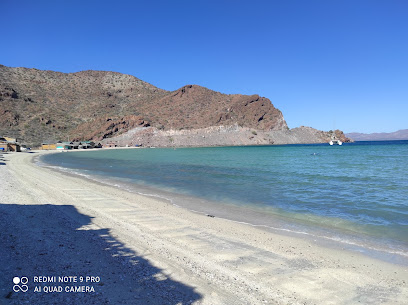
Hotel Serenidad
Discover the serene beauty of Hotel Serenidad, a perfect beachfront retreat in Mulegé, Baja California Sur, offering comfort and adventure.

Misión Santa Rosalía de Mulegé
Discover the rich history and serene beauty of Misión Santa Rosalía de Mulegé, a cultural gem in Baja California Sur.

Huerta Don Chano RV Park
Experience the serene beauty of Huerta Don Chano RV Park, a tranquil campground in Baja California Sur that offers nature lovers a perfect getaway.

Histórico Las Casitas
Experience the authentic charm of Mexico at Histórico Las Casitas, your perfect retreat in Heroica Mulegé, Baja California Sur.

Mulegé Lighthouse
Experience breathtaking views and rich maritime history at the picturesque Mulegé Lighthouse in Baja California Sur, a must-visit for every traveler.

Mulege Brewing Company
Experience the flavors of Baja California Sur at Mulege Brewing Company, where craft beer meets gourmet burgers and pizzas in a vibrant atmosphere.
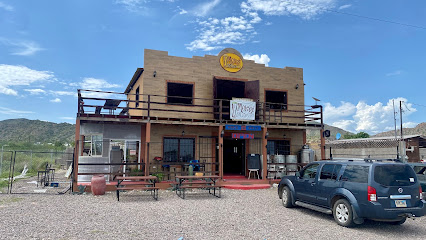
Clementine's
Experience the charm of Mulegé at Clementine's, a cozy Bed & Breakfast offering authentic Mexican hospitality amidst breathtaking landscapes.

Museo de Mulegé
Explore the captivating history and culture of Mulegé at the Museo de Mulegé, a must-see attraction for every tourist in Baja California Sur.

Indie Park Mulegé
Discover the tranquil charm of Indie Park Mulegé, a unique hotel in Baja California Sur that merges comfort with local adventure.

Letras Mulegé
Experience the vibrant artistry of Letras Mulegé, a stunning tourist attraction in Baja California Sur, where culture and natural beauty unite.

Casa Granada
Experience the charm of Mulegé at Casa Granada, a cozy bed and breakfast with local charm and personalized service in Baja California Sur.

Río Mulegé Overlook
Discover the stunning vistas of Río Mulegé Overlook, where nature's beauty unfolds with breathtaking views of the Mulegé River and surrounding landscapes.

Vinedo Heroica Mulege
Explore Vinedo Heroica Mulege: A premier winery in Baja California Sur, offering exquisite wines and breathtaking views in a charming setting.
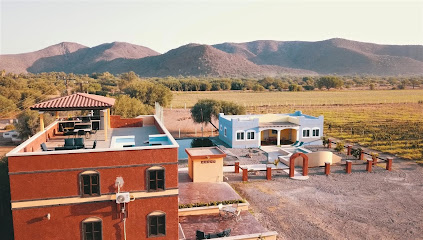
Unmissable attractions to see
Playa Santispac
Experience the tranquil beauty of Playa Santispac, a hidden gem in Baja California Sur, offering pristine beaches, stunning sunsets, and vibrant marine adventures.

Playa El Burro
Experience the serene beauty and adventure of Playa El Burro, a stunning public beach in Baja California Sur, perfect for relaxation and exploration.

Museo de Mulegé
Explore the rich history and culture of Baja California Sur at the fascinating Museo de Mulegé, a must-visit tourist attraction.
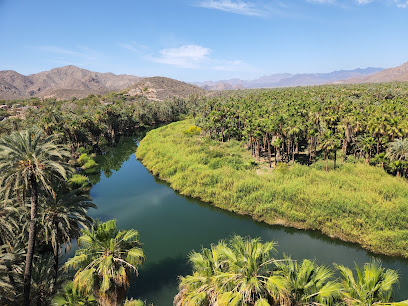
Letras Mulegé
Explore the vibrant artistry and cultural heritage at Letras Mulegé, a stunning tourist attraction in Baja California Sur, Mexico.

Mulegé Beachfront
Experience the stunning beauty of Mulegé Beachfront in Baja California Sur, a perfect blend of adventure and relaxation by the sea.

Río Mulegé Overlook
Discover the stunning vistas of Río Mulegé Overlook in Baja California Sur, where nature's beauty meets serene tranquility, perfect for every traveler.

Malecón Mulegé
Discover the tranquil beauty of Malecón Mulegé, a coastal park offering stunning views, local culture, and serene relaxation in Baja California Sur.

Monumento a la Madre
Discover the heartfelt tribute to motherhood at Monumento a la Madre in Mulegé, Baja California Sur, a peaceful memorial park surrounded by nature.

Playas Gemelas
Experience the beauty of Playas Gemelas in Baja California Sur, a tranquil paradise with pristine beaches and vibrant marine life, perfect for relaxation and adventure.

El mirador
Discover the breathtaking beauty of El Mirador, a premier hiking destination in Baja California Sur, offering stunning views and serene nature trails.

La mera agusticidad, si señor.
Experience the vibrant culture and authentic flavors of Baja California Sur at La Mera Agusticidad, a quintessential tourist attraction.

Trajineras Mulegé
Explore the colorful trajineras of Mulegé and immerse yourself in the local culture of Baja California Sur's stunning landscapes.

Prismas basálticos
Discover the breathtaking Prismas Basálticos in Mulegé, where nature's artistry meets stunning landscapes and tranquil waters.

Garcia y Amigos
Experience the beauty and culture of Baja California Sur at Garcia y Amigos, a hidden gem in Heroica Mulegé offering stunning landscapes and warm local hospitality.

Coordinación de Turismo H.Mulege
Discover the beauty and culture of Mulegé at the Coordinación de Turismo H. Mulegé, your gateway to Baja California Sur's hidden gems.

Essential places to dine
Restaurant Bar Los Equipales
Experience authentic Mexican cuisine at Restaurant Bar Los Equipales in Heroica Mulegé - a must-visit dining destination in Baja California Sur.

Restaurante Doney´s
Savor the rich flavors of Mexico at Restaurante Doney's in Mulegé – where every meal is a celebration!
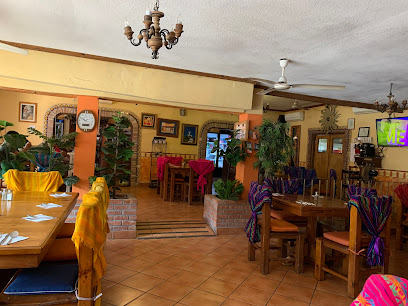
Restaurant Bar El Candil
Discover authentic Mexican cuisine at Restaurant Bar El Candil in Mulegé—where every dish tells a story and every bite brings joy.

Casa Mayoral Restaurant-Bar
Discover authentic Mexican cuisine at Casa Mayoral Restaurant-Bar in Mulegé - where local flavors meet vibrant atmosphere.

Restaurant La Huerta
Experience authentic Mexican flavors at Restaurant La Huerta in Baja California Sur – a culinary journey through tradition and taste.

El Kaluly
Experience authentic seafood delights at El Kaluly in Mulegé - home to the best fish tacos and vibrant coastal flavors.
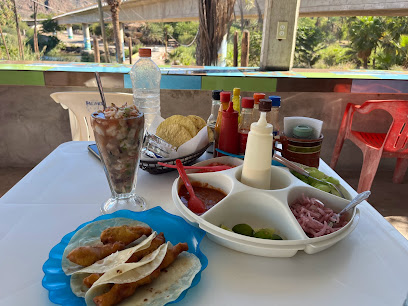
Asadero Y Mariscos Mario
Experience authentic coastal cuisine at Asadero Y Mariscos Mario in Mulegé – where fresh seafood meets vibrant flavors in a welcoming atmosphere.

Cazuela Molcajete
Experience authentic Mexican flavors at Cazuela Molcajete in Mulegé – where every dish tells a story.
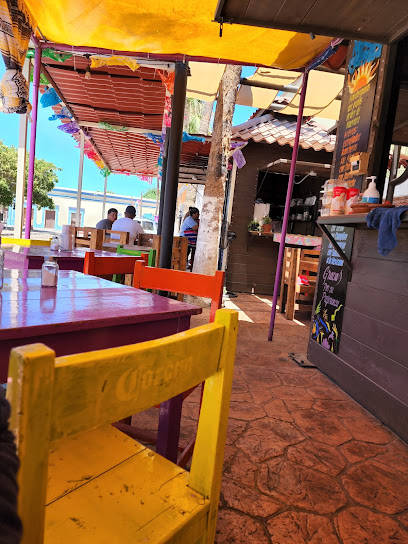
Restaurant El Patron
Discover fresh seafood delights at Restaurant El Patron in Mulegé - where every dish captures the spirit of Baja California Sur.
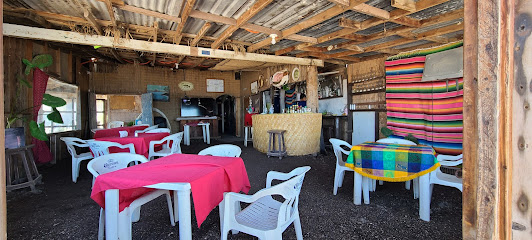
Restaurant Carmelita
Experience culinary excellence at Restaurant Carmelita in Mulegé - where local flavors meet breathtaking views.

Poncho's place Mulege
Discover the culinary gem of Mulege at Poncho's Place – where gourmet hot dogs meet local flavors in a lively atmosphere.

Las Casitas Restaurant
Experience authentic Mexican flavors at Las Casitas Restaurant in Heroica Mulegé - where every meal tells a story.

Restaurante Señor Geko's
Experience authentic Mexican cuisine at Restaurante Señor Geko's in Baja California Sur—where every dish tells a story.

Jungla Jim's
Discover authentic Mexican flavors at Jungla Jim's in Mulegé, Baja California Sur – where every meal tells a story.

Antojitos Wendy
Experience authentic Mexican cuisine at Antojitos Wendy in Heroica Mulegé—where every dish tells a story of Baja California Sur's rich culinary heritage.

Markets, malls and hidden boutiques
Misión Santa Rosalía de Mulegé
Discover the historic Misión Santa Rosalía de Mulegé, a stunning colonial gem nestled in Baja California Sur's beautiful landscape.

Histórico Las Casitas
Experience authentic Baja California Sur hospitality at Histórico Las Casitas, a charming hotel in the heart of Heroica Mulegé.

Mulegé Lighthouse
Discover the breathtaking Mulegé Lighthouse, a scenic spot offering stunning views of the Sea of Cortez and a glimpse into Baja California's maritime heritage.

Mulege Brewing Company
Discover the flavors of Mulege at Mulege Brewing Company, where craft beer meets delicious food in a vibrant Baja atmosphere.

Clementine's
Discover tranquility and adventure at Clementine's, the perfect bed & breakfast in the heart of Baja California Sur, Mexico.

Mini Súper Ayleth
Explore the local flavors of Mulegé at Mini Súper Ayleth, your go-to grocery store for fresh produce and unique finds in Baja California Sur.
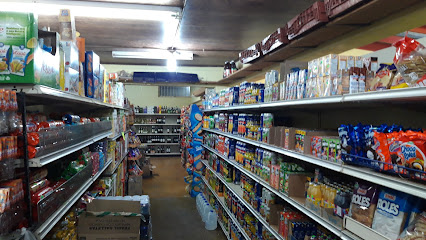
Super Market
Explore Mulegé's Supermarket for fresh local produce, unique snacks, and a taste of Baja California Sur's vibrant culture.

Saúl Davis Store
Experience the local essence at Saúl Davis Store, your go-to grocery for fresh produce and artisanal delights in Mulegé, Baja California Sur.

MiniSúper El Cacheño
Discover local flavors and essentials at MiniSúper El Cacheño, the quintessential grocery store in Mulegé, Baja California Sur.

ABARROTES EL PINGÜINO
Experience the vibrant flavors of Mexico at Abarrotes El Pingüino, a charming grocery store in La Palma, Baja California Sur.
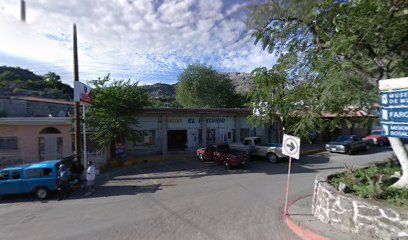
Río Mulegé Overlook
Discover the stunning beauty of the Río Mulegé Overlook, a breathtaking viewpoint in Baja California Sur offering panoramic views and serene nature.

Casa Yee
Discover the heart of Mulegé through local flavors at Casa Yee, your go-to grocery store for authentic Baja California Sur products.

El Rebaje
Experience local flavors at El Rebaje Grocery Store in Mulegé, offering fresh produce and exceptional service for your culinary needs.

Cool Scoops de Mulegé
Cool Scoops de Mulegé is the ultimate ice cream destination, offering delicious flavors in the heart of Baja California Sur for a refreshing treat.

ABARROTES PAOLA
Discover local flavors and fresh produce at Abarrotes Paola, the charming grocery store in Mulegé, Baja California Sur.

Essential bars & hidden hideouts
Restaurant Bar Los Equipales
Experience the vibrant flavors of Mexico at Restaurant Bar Los Equipales in Mulegé, where every meal is a celebration of tradition and taste.

Restaurante Doney´s
Experience the rich culinary heritage of Baja California Sur at Restaurante Doney's, where authentic Mexican flavors come to life.

Restaurant Bar El Candil
Experience the rich flavors of Baja California Sur at Restaurant Bar El Candil, where grilled delights and a vibrant atmosphere await every traveler.
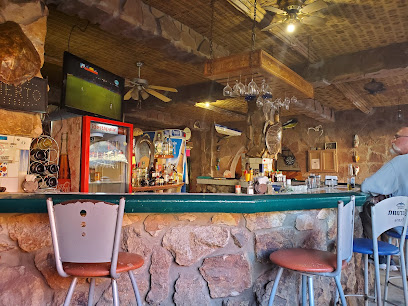
Casa Mayoral Restaurant-Bar
Discover the flavors of Baja California Sur at Casa Mayoral, a top-tier restaurant-bar in Mulegé offering authentic local cuisine and a welcoming atmosphere.

Restaurant La Huerta
Discover the rich flavors of Mexico at Restaurant La Huerta, where authentic dishes and warm hospitality create an unforgettable dining experience.

Restaurant El Patron
Discover the authentic taste of Baja California Sur at Restaurant El Patron, where fresh seafood meets vibrant local culture.

Poncho's place Mulege
Discover Poncho's Place in Mulegé, where every hot dog is a celebration of local flavors and culinary creativity.

Las Casitas Restaurant
Experience authentic Mexican flavors at Las Casitas Restaurant in Mulegé, Baja California Sur – a must-visit culinary destination for every traveler.
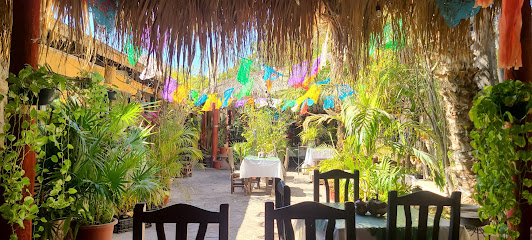
Restaurante Señor Geko's
Experience the vibrant flavors of Baja California Sur at Señor Geko's, a top restaurant destination for unforgettable culinary delights.

Jungla Jim's
Experience the vibrant flavors and lively ambiance of Jungla Jim's, a culinary gem in Mulegé, Baja California Sur, perfect for food lovers and adventurers.

The Racing Bar
Discover the unique blend of motorsports and culinary delight at The Racing Bar in Mulegé, Baja California Sur.

Km. 128 Road Café
Experience the local flavors and warm hospitality at Km. 128 Road Café, a hidden gem on the Transpeninsular Highway in Baja California Sur.
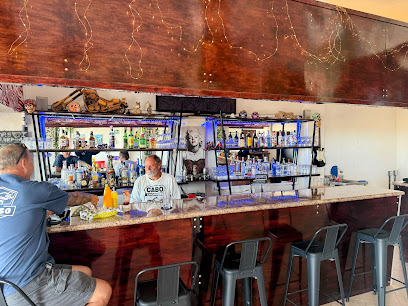
Birote's Everybody
Discover the taste of the sea at Birote's Everybody, Mulegé's top seafood destination, offering fresh flavors and a welcoming atmosphere.

Lino Cafe
Experience the vibrant flavors of Baja California Sur at Lino Cafe, a family-friendly spot in the heart of Mulegé, perfect for travelers seeking delicious local cuisine.

Billar Beach Life Sport Bar
Discover the vibrant Billar Beach Life Sport Bar in Baja California Sur, where beach life meets sports excitement and local flavors.

Local Phrases about Mulege
-
- HelloHola
[oh-lah] - GoodbyeAdiós
[ah-dee-ohs] - YesSí
[see] - NoNo
[noh] - Please/You're welcomePor favor/De nada
[por fah-vor/deh nah-dah] - Thank youGracias
[grah-see-ahs] - Excuse me/SorryPerdón/Lo siento
[pair-dohn/loh see-en-toh] - How are you?¿Cómo estás?
[koh-moh ehs-tahs] - Fine. And you?Bien. ¿Y tú?
[byen. ee too] - Do you speak English?¿Hablas inglés?
[ah-blahs een-glays] - I don't understandNo entiendo
[noh ehn-tee-ehn-doh]
- HelloHola
-
- I'd like to see the menu, pleaseMe gustaría ver el menú, por favor
[meh goo-stah-ree-ah vehr ehl men-oo, por fah-vor] - I don't eat meatNo como carne
[noh koh-moh kahr-neh] - Cheers!¡Salud!
[sah-lood] - I would like to pay, pleaseMe gustaría pagar, por favor
[meh goo-stah-ree-ah pah-gar, por fah-vor]
- I'd like to see the menu, pleaseMe gustaría ver el menú, por favor
-
- Help!¡Ayuda!
[ah-yoo-dah] - Go away!¡Vete!
[veh-teh] - Call the Police!¡Llama a la policía!
[yah-mah ah lah poh-lee-see-ah] - Call a doctor!¡Llama a un doctor!
[yah-mah ah oon dohk-tohr] - I'm lostEstoy perdido
[ehs-toy pair-dee-doh] - I'm illEstoy enfermo
[ehs-toy ehn-fehr-moh]
- Help!¡Ayuda!
-
- I'd like to buy...Me gustaría comprar...
[meh goo-stah-ree-ah kohm-prahr...] - I'm just lookingSolo estoy mirando
[soh-loh ehs-toy mee-rahn-doh] - How much is it?¿Cuánto cuesta?
[kwan-toh kwehs-tah] - That's too expensiveEso es demasiado caro
[eh-soh ehs deh-mah-see-ah-doh kah-roh] - Can you lower the price?¿Puedes bajar el precio?
[pweh-dehs bah-har ehl pree-syoh]
- I'd like to buy...Me gustaría comprar...
-
- What time is it?¿Qué hora es?
[keh oh-rah ehs] - It's one o'clockEs la una en punto
[ehs lah oo-nah ehn poon-toh] - Half past (10)Y media (10)
[ee meh-dee-ah (diez)] - MorningMañana
[mah-nyah-nah] - AfternoonTarde
[tahr-deh] - EveningNoche
[noh-cheh] - YesterdayAyer
[ah-yehr] - TodayHoy
[oy] - TomorrowMañana
[mah-nyah-nah] - 1Uno
[oo-noh] - 2Dos
[dohs] - 3Tres
[trehs] - 4Cuatro
[kwah-troh] - 5Cinco
[seen-koh] - 6Seis
[says] - 7Siete
[syeh-teh] - 8Ocho
[oh-choh] - 9Nueve
[nweh-veh] - 10Diez
[diez]
- What time is it?¿Qué hora es?
-
- Where's a/the...?¿Dónde está...?
[dohn-deh ehs-tah] - What's the address?¿Cuál es la dirección?
[kwal ehs lah dee-rehk-syon] - Can you show me (on the map)?¿Puedes mostrarme (en el mapa)?
[pweh-dehs mohs-trar-meh (ehn ehl mah-pah)] - When's the next (bus)?¿Cuándo es el próximo (autobús)?
[kwan-doh ehs ehl prohk-see-moh (ow-toh-boos)] - A ticket (to ....)Un boleto (a ...)
[oon boh-leh-toh (ah ...)]
- Where's a/the...?¿Dónde está...?
History of Mulege
-
Mulege was founded in 1705 by Jesuit missionaries, led by Father Juan María de Salvatierra, who established the Misión Santa Rosalía de Mulegé. This mission aimed to convert the local Cochimí people to Christianity and served as a center for agriculture, which was vital for sustaining the mission and its inhabitants.
-
The Misión Santa Rosalía de Mulegé is one of the oldest missions in Baja California Sur. It was built using local stone and is an excellent example of the colonial architecture of the period. The mission saw numerous changes and developments until its secularization in the 19th century. Today, it stands as a historical monument reflecting the region's colonial past.
-
During the early 19th century, Mulege played a role in Mexico's struggle for independence from Spain. Although the town was relatively small, it served as a strategic point for the movement of revolutionary forces and supplies. The local population supported the cause, contributing to the ultimate success of the independence movement in 1821.
-
The coastal location of Mulege made it a target for pirates in the 18th and 19th centuries. Pirates such as Thomas Cavendish and Francis Drake are known to have navigated the waters of the Gulf of California. The town's inhabitants had to build fortifications and remain vigilant to protect their community from these marauders.
-
Mulege experienced significant economic growth in the late 19th and early 20th centuries, primarily due to mining, agriculture, and fishing. The discovery of mineral deposits attracted settlers and investment, leading to the establishment of small-scale industries. The fertile lands of the Mulege River Valley also supported the cultivation of fruits and vegetables, which became important local commodities.
-
Mulege is rich in cultural traditions, many of which are celebrated through annual festivals. One of the most notable is the Fiesta de Santa Rosalía, held in honor of the town's patron saint. This festival features traditional music, dance, and food, bringing together the community and visitors to celebrate Mulege's heritage.
-
Today, Mulege is a charming destination that attracts tourists with its historical sites, natural beauty, and tranquil atmosphere. The town has retained much of its colonial architecture and traditional lifestyle, offering visitors a glimpse into its storied past. Tourism has become a vital part of the local economy, with activities such as kayaking, fishing, and exploring the nearby Sierra de Guadalupe mountains.
Mulege Essentials
-
Mulege is located in the Baja California Sur state of Mexico, along the Sea of Cortez. The nearest major airport is Loreto International Airport (LTO), approximately 135 kilometers (84 miles) south of Mulege. From the airport, you can rent a car or take a taxi to reach Mulege. There are also bus services available from Loreto and La Paz, which is about 500 kilometers (311 miles) south of Mulege. If you are driving, Mulege is accessible via Mexico Federal Highway 1.
-
Mulege is a small town, and many attractions are within walking distance. For longer distances, taxis are available and can be arranged through your hotel or local taxi stands. Renting a car is also a convenient option for exploring the surrounding areas, including nearby beaches and historic sites. There is limited public transport within Mulege itself, but bus services connect Mulege to other towns and cities in the region.
-
The official currency in Mexico is the Mexican Peso (MXN). Credit cards are accepted in most hotels, restaurants, and larger shops, but it is advisable to carry cash for smaller establishments and local markets. ATMs are available in Mulege, but it is wise to have some cash on hand as not all places accept cards. Ensure you notify your bank of your travel plans to avoid any issues with your cards.
-
Mulege is generally considered a safe destination for tourists. However, it is always best to take standard precautions. Avoid walking alone at night in unfamiliar areas and keep an eye on your belongings in crowded places. While Mulege does not have specific high-crime areas targeting tourists, it is advisable to stay vigilant and aware of your surroundings. Consult local advice and updates from your accommodation.
-
In case of emergency, dial 911 for immediate assistance. Mulege has a local police station and medical facilities. It is recommended to have travel insurance that covers medical emergencies. For minor health issues, there are pharmacies in the town where you can purchase over-the-counter medications. Familiarize yourself with the location of the nearest medical clinic or hospital upon arrival.
-
Fashion: Do dress comfortably and modestly, especially when visiting religious sites. Avoid wearing overly revealing clothing. Religion: Do respect local customs and traditions. When visiting churches, dress conservatively and be mindful of local practices. Public Transport: Do be polite and respectful to fellow passengers. Don't eat or drink on public transport. Greetings: Do greet people with a friendly 'Hola' or 'Buenos días.' A handshake is also common in formal settings. Eating & Drinking: Do try local cuisine and accept food offerings graciously. Don't refuse hospitality, as it is considered impolite.
-
To experience Mulege like a local, visit the local markets where you can buy fresh produce and traditional Mexican goods. Engage with locals, as they are often friendly and willing to share stories about Mulege's history and culture. Don't miss the chance to visit the historic Mission Santa Rosalía de Mulegé and the beautiful Playa Santispac. For a unique experience, take a kayaking tour on the Mulege River, offering stunning views of the surrounding landscapes.
Trending Landmarks in Mulege
Nearby Cities to Mulege
-
Things To Do in Bisbee
-
Things To Do in Tucson
-
Things To Do in Yuma
-
Things To Do in Chandler
-
Things To Do in Gilbert
-
Things To Do in Mesa
-
Things To Do in Tempe
-
Things To Do in Phoenix
-
Things To Do in Scottsdale
-
Things To Do in El Paso
-
Things To Do in Las Cruces
-
Things To Do in Tijuana
-
Things To Do in Chula Vista
-
Things To Do in White Sands
-
Things To Do in Coronado








